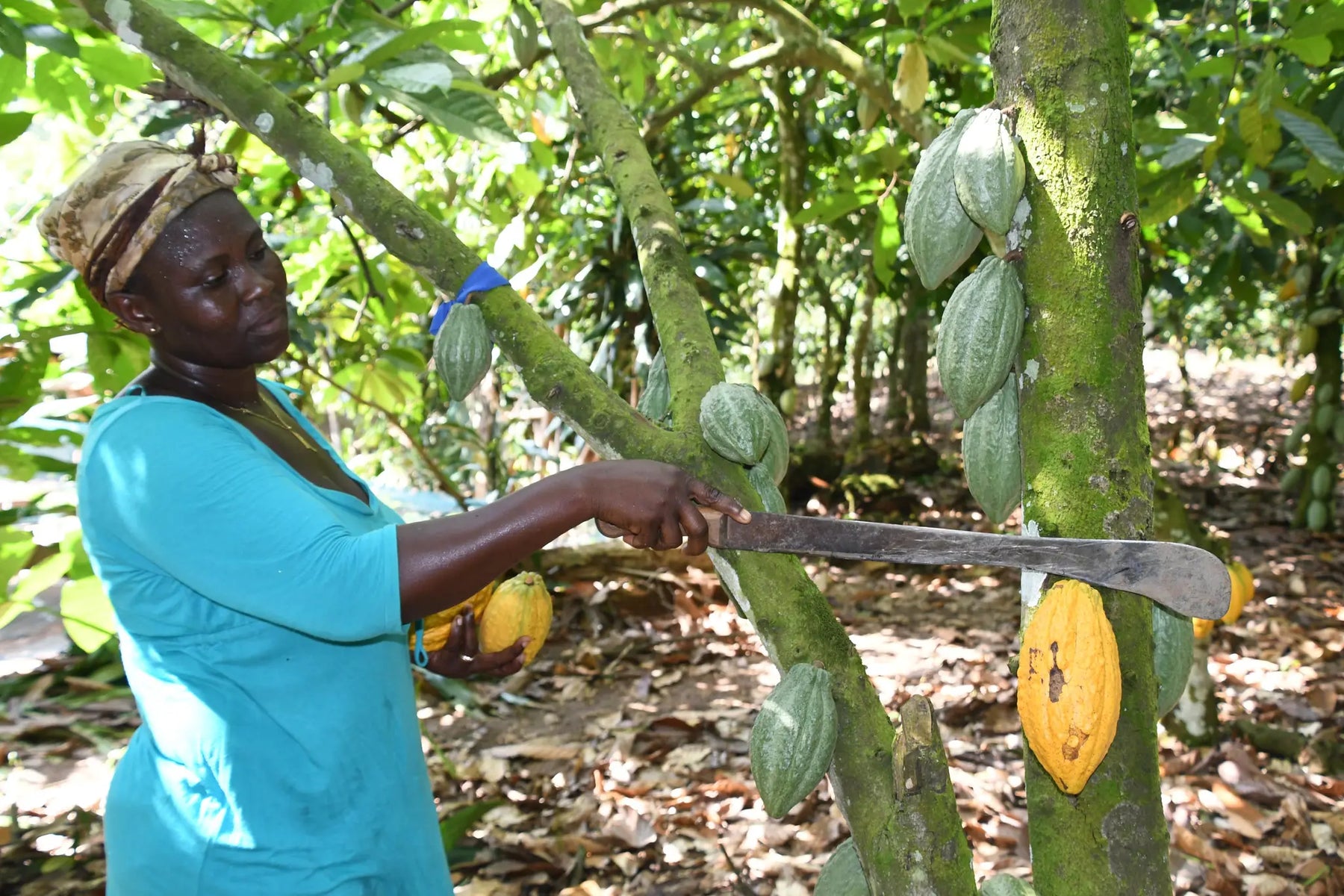
Cocoa production: an overview

Cocoa farming is a demanding, hands-on process that involves year-round care and manual labor. In this blog, you'll learn about the intricate steps of cocoa cultivation, from hand-harvesting the pods to the challenges faced by farmers. Discover how cocoa beans are processed and the journey they take from the farm to global chocolate production. Explore the labor-intensive practices and the major players in the cocoa industry that shape the chocolate we enjoy.
Cocoa farming is hard manual labour
Cocoa cultivation is very labour-intensive and relies on manual work. It also requires continuous care and harvesting: the cocoa tree blossoms all year round and thus constantly develops fruit. The large cocoa pods grow on its trunk and are harvested by hand.

Each cocoa pod contains about 20-50 seeds - the so-called cocoa beans - which are surrounded by a sweet white pulp. It takes a whole year's harvest of one tree to produce half a kilo of cocoa.

Cocoa is also a very sensitive plant that reacts quickly to changes in weather and is susceptible to diseases and pests. After the ripe pods are harvested, they are opened with machetes to expose the beans.

The beans are then fermented for several days, which gives the cocoa its typical aroma. The beans are then dried and packed in bags. Now they are ready for resale to the middlemen.

From the cocoa bean to chocolate
There is still a long way to go before the bitter bean is turned into chocolate: middlemen buy the bags of raw cocoa beans and sell them to exporters.
Although Côte d'Ivoire is now the world's largest cocoa processor, the factories for further processing belong to international companies, and a large proportion of cocoa beans are still not processed in the countries where they are grown. Four major companies (including Barry Callebaut, Cargil and Olam) dominate cocoa trading and milling. Together, they control about two-thirds of the world's cocoa processing. They process the cocoa in factories around the world.

Leave a comment